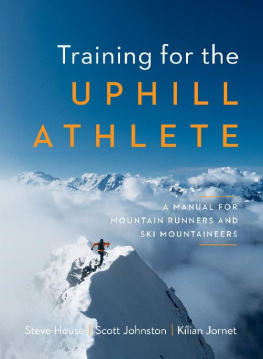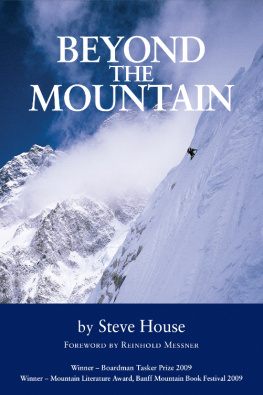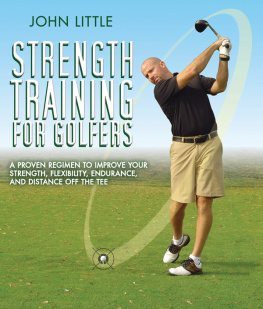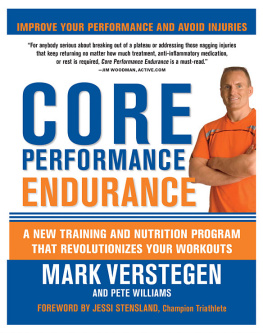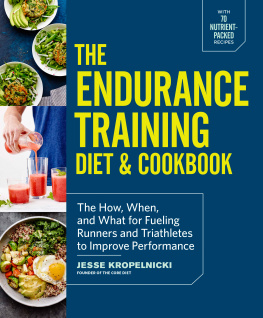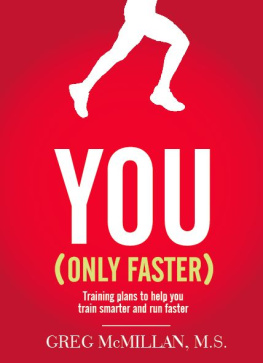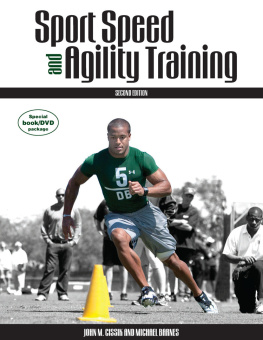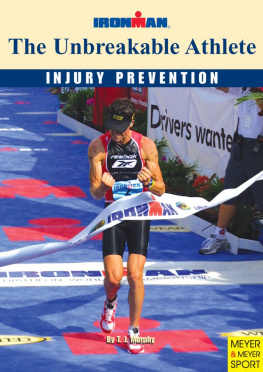

Training for the Uphill Athlete
A Manual for Mountain Runners and Ski Mountaineers
Patagonia publishes a select number of titles on wilderness, wildlife, and outdoor sports that inspire and restore a connection to the natural world.
copyright 2019 Patagonia Works
Text Steve House, Klian Jornet, Scott Johnston
Graphs, tables, and illustrations Patagonia
Photograph copyrights held by the photographer indicated in captions.
All rights reserved. No part of this book may be used or reproduced in any manner whatsoever without written permission from the publisher and copyright holders. Requests should be emailed to or mailed to Patagonia Books, Patagonia Inc., 259 W. Santa Clara St., Ventura, CA 93001-2717.
Disclaimer: The information provided in this book is designed to provide helpful information on the subjects covered, including endurance and strength training, nutrition, and physical and mental fitness. It is particularly designed for people who are actively participating in or would like to train for certain extreme physical activities such as rock and ice climbing. This information is not for everyone, as many of the activities described are intense and can be dangerous. You should not undertake any of these activities unless and until you have consulted with qualified medical personnel and been cleared to participate. And, of course, if you find that you are suffering from the symptoms of any physical or medical condition, you should consult with your physician or other qualified health provider immediately. Do not avoid or disregard professional medical advice or delay in seeking it because of something you have read in this book.
All of the information contained in this book, including text, graphics, images, recipes, exercises, training regimens, diets, and references to third party materials are for informational and educational purposes only. The authors and publisher of this book shall have no liability or responsibility to any reader or any third party arising out of any injury or damage incurred as a result of the use of the information provided in this book.
Hardcover edition
Printed in Canada on 100 percent post-consumer recycled paper
Editor John Dutton
Photo Editor Kyle Sparks
Book Designer Faceout Studio
Project Manager Jennifer Patrick
Photo Production Sus Corez
Production Rafael Dunn
Creative Directors Christina Speed, Bill Boland
Creative Advisor Jennifer Ridgeway
Director of Books Karla Olson

Cover photos: (front) Klian Jornet in Switzerland. Photo: Steve House
(back) Kim Strom runs a rocky ridgeline above Saas Almagell, Switzerland. Photo: Dan Patitucci
Paperback 978-1-938340-84-0
E-Book 978-1-938340-85-7
Library of Congress Control Number 2018965947
CONTENTS

Klian Jornet runs down the Tschhorn, Switzerland. Photo: Steve House
The wind had made its presence known all night, the tiny tent shaking off its layer of breath-turned-frost with each gust. The icy flakes settled, then melted onto the only part of me sticking out of the sleeping bag: my nose. I was tired when I woke, but no more than Marko, whom I followed out the tent door at dawn. We snapped on crampons, shouldered our summit packs, and climbed into the storm.
All our known world was below us, invisible but pulling on us, like gravity. Marko climbed steadily, quickly. I, more slowly and erratically. Soon he was also invisible to me, somewhere above me. The loneliness of being lost in between my partner and my world was crushing. I sped up for a moment then stumbled, gasping, coughing, and wheezing. With only footprints in the snowno one had ever passed here before (or since)and the occasional parting of cloud to reveal Markos green jacket, the mark of an alien in the black-and-white world of 23,000 feet in the Himalaya, I could see enough to know he was there. I could follow, but I couldnt keep up.
Two hours later we turned around, our summit attempt abandoned after five hard-fought days of climbing. A lifetime goal became the newest addition to the dusty, cluttered shelf of abandoned dreams.
Id climbed thousands of mountains and Id never trained. Id earned sponsorships and attention and money as a climber. And Id never trained. Id outpaced partners, put up first ascents, gone sixty hours up the steepest, iciest wall in North America. And Id never trained. Now I had to turn around on the biggest, highest, hardest mountain Id ever attemptedbecause I had never trained.
When I came home I found a coach and I started training. Six months later I was sick, IVs in my veins, fever on my brow. I didnt eat for twenty-one days and went from 165 pounds to 135 pounds. Once I started to come around, Scott Johnston, my friend, a former World Cup cross-country ski racer, and climbing partner, called me over to his house and cooked a hamburger.
Sitting it in front of me, he said, You know why you got sick, right? She [your coach] doesnt understand climbing; she doesnt understand what goes into your job. She overtrained you. Badly. You have to layer training volume on gradually.
So began my first of thousands of lessons on endurance training and physiology, lessons that eventually would become our first book together, Training for the New Alpinism. Needless to say, Scott became my coach. My fitness blossomed. Less than two years later, I turned pro climberno other work. My climbing career went world-class, and I never found myself overtrained, ill, or injured again. Until I fell 100 feet from a mountain in Canada.
I like to say that the only people who are not enthusiastic about training are those who havent trained correctly. The only people who hate lunges are those whove never done enough of them to experience what strong legs feel like on the trail. The only ones who hate long, slow aerobic capacitybuilding runs and skis are those who have never known what it feels like to sail up the mountain, nose to the wind, with ease. Relaxed, poised, moving fast and flying.
The fitness world is a minefield of snake oil salesmen, fads, and claims that are too good to be true that are just that. While I recovered from my fall, healing dozens of fractures, punctured lungs, and a shaken identity, Scott and I began to try to answer the most common question I got as a professional climber: How do you train? When we published Training for the New Alpinism in 2014, its success far exceeded our expectations. Wed figured on enough alpinists to sell maybe 1,000 copies. We sold 50,000.
Eventually we learned that we had been right. Fifty thousand alpinists did not buy our book. Ten thousand did, with the other 40,000 copies going to mountain runners, ski mountaineers, and skimo racers who lacked a training guide of their own and figured alpinism was the closest thing. They bought in, literally and figuratively, to the no-nonsense, no-fads, no-promises approach of Training for the New Alpinism.

I met Klian Jornet in my home mountains in early winter of 2014. He and Emelie Forsberg were there to ski some of the famous Colorado powder. We teamed up and I guided them to a classic steep descent near Telluridethe San Joaquin Couloir. We skinned from the valley at the first December light, scrambled up the shoulder, and were back in the valley before noon. At the bakery, we ate muffins, our first food of the day, and Klian told me how much hed enjoyed
Next page
